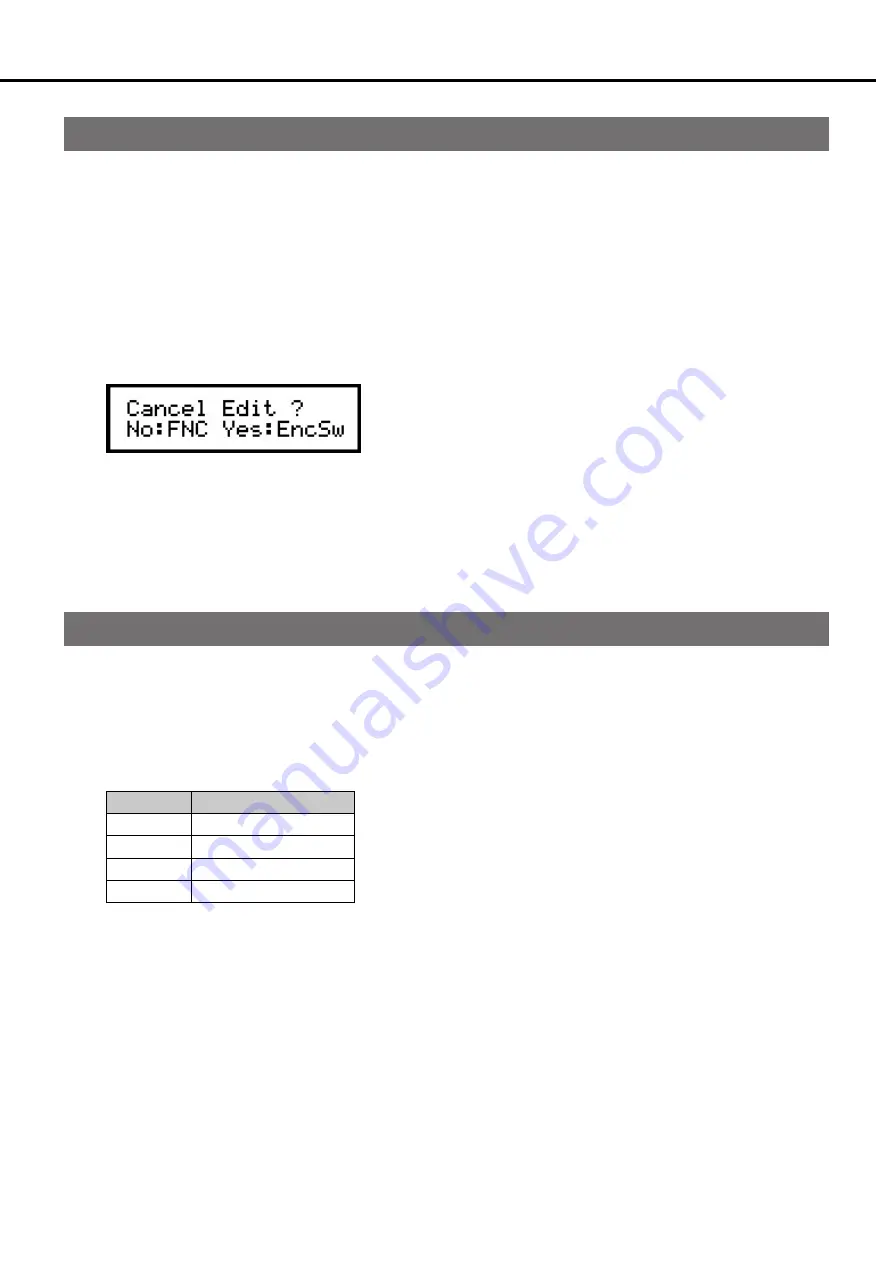
4
Comparing with the unedited sound
Here's how to compare the edited sound with the unedited sound.
1.
Edit an instrument or effect.
Once you edit a parameter, the FNC button lights.
2.
Press the FNC button.
The FNC button and the encoder blink; your edits are temporarily cancelled, and you can hear the unedited
sound.
During this time, the display shows the following.
3.
If you want to continue editing, press the FNC button, you'll return to the sound as it was before you pressed the
FNC button in step 2.
If you want to cancel editing and return to the unedited sound, press the encoder.
Auditioning the sound of each timbre (instruments only)
Here's how you can listen to the individual timbres within an instrument.
ca
An instrument consists of four components called "timbres."
One timbre is assigned to each of the [A] - [D] buttons.
Button
Timbre
A
Main timbre
B
Sub timbre
C
Extra timbre
D
Dry timbre
While in Instrument edit mode, each time you press one of the [A] - [D] buttons, the corresponding timbre turns on
(lit green; the timbre is heard) or off (lit red; the timbre is not heard).
This lets you hear the sound of each timbre individually, or mute only the sound of specific timbres.
These on/off settings are ignored in Play mode. In Play mode, all timbres are always on.
Instrument and effect parameters



















